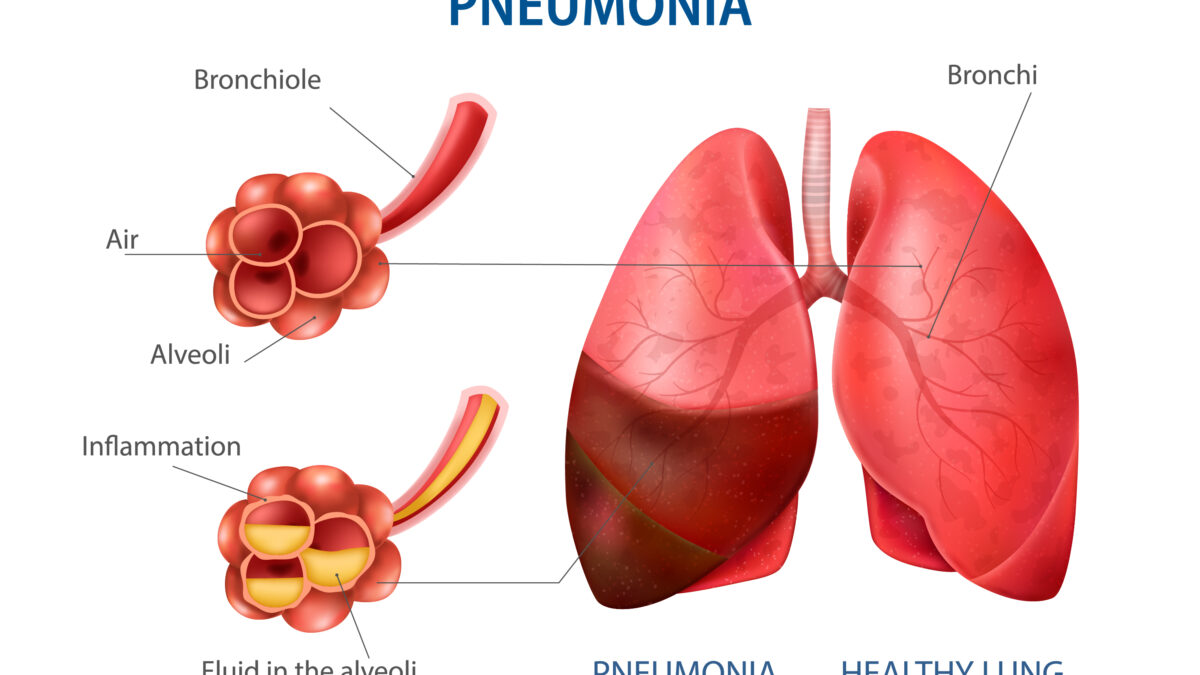- Immediate contact :
- +1-323-988-5889
- info@sonosif.com

Ultrasound-Guided Ectopic Pregnancy Diagnosis
April 7, 2022
Ultrasound-Guided Enlarged Heart Diagnosis
April 7, 2022Pneumonia is an infection that inflames the air sacs in one or both lungs. The air sacs may fill with fluid or pus (purulent material), causing cough with phlegm or pus, fever, chills, and difficulty breathing.
Pneumonia can range in seriousness from mild to life-threatening. It is most serious for infants and young children, people older than age 65, and people with health problems or weakened immune systems.
Many germs can cause pneumonia. The most common are bacteria and viruses in the air we breathe. Your body usually prevents these germs from infecting your lungs. But sometimes these germs can overpower your immune system, even if your health is generally good.
The signs and symptoms of pneumonia vary from mild to severe, depending on factors such as the type of germ causing the infection, and your age and overall health. Mild signs and symptoms often are similar to those of a cold or flu, but they last longer.
Signs and symptoms of pneumonia may include:
· Chest pain when you breathe or cough
· Confusion or changes in mental awareness (in adults age 65 and older)
· Cough, which may produce phlegm
· Fatigue
· Fever, sweating and shaking chills
· Lower than normal body temperature (in adults older than age 65 and people with weak immune systems)
· Nausea, vomiting or diarrhea
· Shortness of breath
There are multiple ways of diagnosis such an issue but ultrasound scanning diagnosis proved to be among the most accurate. Lung Ultrasound (LUS) is a feasible, portable, easy to learn and non-ionizing radiation technique. In the last decades, it has become an emerging diagnostic tool for diagnosing pneumonia in adults and children, with remarkable sensitivity and specificity.
To perfectly perform this lung check-up, a highly professional device is needed. A high-resolution Convex and Linear Color Doppler wireless Double Head Ultrasound Scanner CLCD might be the best option in this case.
This innovative color wireless ultrasound scanner has two heads, thus, making it more practical and more affordable than buying two separate single-headed probes.
The convex side of the color doppler transducer is used for in-depth examinations of the internal parts of the body like the lungs and so it is convenient for examining the Pneumonia issue.
In fact, the Ultrasound Probe CLCD is specifically designed for pulmonologists to produce colored lung images and transfer them into their and their patients’ phones or tablet screen so that both parts will be well aware of the gravity of the issue and be able to discuss the best treatment option in complete transparency.
Plus, the device is IOS and Android compatible. Small and light, easy to carry, and easy to operate. In other words, the CLCD does not compensate for the colored image quality.
With all these advanced services combined, the Convex and Linear Color Doppler wireless Double Head Ultrasound Scanner CLCD should be pulmonologists’ and Pneumonia patients’ first choice especially since it is specifically designed to observe major internal organs such as the lung.
As such, patients shouldn’t worry since they’re going to be provided with accurate scan imagery and so safer and faster examination. Herein we highly recommend the FDA approved Convex and Linear Color Doppler wireless Double Head Ultrasound Scanner CLCD for Pneumonia patients.
Reference: air sacs inflammation
Disclaimer: Although the information we provide is used by different doctors and medical staff to perform their procedures and clinical applications, the information contained in this article is for consideration only. SONOSIF is not responsible neither for the misuse of the device nor for the wrong or random generalizability of the device in all clinical applications or procedures mentioned in our articles. Users must have the proper training and skills to perform the procedure with each ultrasound scanner device.
The products mentioned in this article are only for sale to medical staff (doctors, nurses, certified practitioners, etc.) or to private users assisted by or under the supervision of a medical professional.





